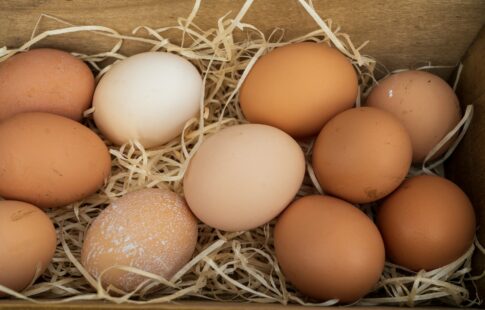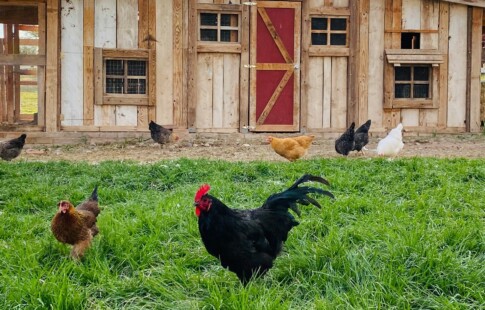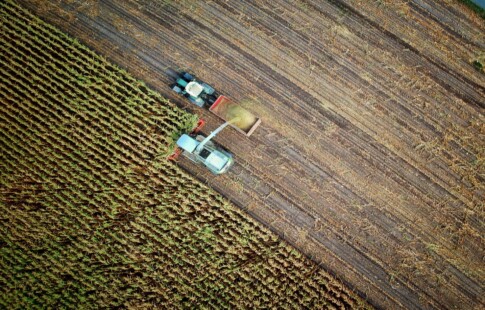
Making Livestock Agriculture Sustainable and Cost-Effective
We are reader-supported. When you buy through links on our site, we may earn affiliate commission.
Livestock agriculture is a farming practice that involves raising animals for food and byproducts, such as wool, oils and leather. Humans have used this practice for centuries. Yet the industry has changed significantly with the introduction of various technologies, an ever-growing population, the societal push for eco-friendly initiatives and the demand for transparency.
Farmers today are concerned about their crops and herd. They also fret over future operations. How long can they remain profitable? More than 1 billion people depend on livestock agriculture to make a living and provide resources. With pressure to become an eco-friendly industry, farmers need to consider how to make the practice sustainable and cost-effective.
Efficiency Leads to Sustainability
New technologies in agriculture have improved efficiency dramatically. The dairy industry is one commodity that has seen some of the most significant strides.
Dropping milk prices in recent years has become a growing concern for farmers. They often look for ways to reduce costs to improve profitability. However, efficiency in the industry can increase margins significantly while keeping operations sustainable.
Cows used to be milked by hand, taking more than 5 minutes each. Today, farms user milk machines in parlors that can milk as many as 20 cows at one time. These machines increase sanitation, which lowers the risk of contaminated milk. Sanitation ultimately saves farmers money, as buyers can reject contaminated batches.
Dairy cows are one of livestock’s leading contributors to greenhouse gas emissions due to the methane they produce, which is 25 times stronger than carbon dioxide at trapping heat. Nitrous oxide, which comes from manure, is 10 times more potent than methane. More efficient milk production is one step toward reduced emissions.
Technology Has a Significant Role
Modern farms use technology and data to keep operations running smoothly. Tech is a considerable investment, but the value of the information gathered outweighs the initial cost.
Farmers use devices for manure testing, storage and tagging animals. They use drones to fly mapped routes and take footage of the herd in different areas. All of these smart devices collect and analyze data. When they detect a significant pattern or problem, they send out an alert.
Some businesses express concern or resistance in regards to technology. Smaller operations don’t think they need it or have time to learn it. It might require employee training and testing. Many believe the work is not worth the reward. However, it’s a significant key in the movement to become sustainable.
Regenerative Practices Are Key
Regenerative agriculture is a land management practice that reduces the over-exploitation of nutrients in the soil. Farmers use a variety of techniques, including crop rotation limited tilling and well-managed grazing.
Animals graze for food. Cows, for example, eat anywhere from six to 11 hours a day. In that time, they consume three to five large meals — the biggest occur around sunrise and sunset. Goats, horses and sheep are other examples of grazing livestock.
With one animal grazing for up to 11 hours in one day, it’s vital to monitor the land. A well-maintained field prevents livestock from depleting all plant life in a particular area, which promotes growth. Rotational grazing, where animals move from field to field, increases the soil’s fertility and improves ecological health. It also nourishes animals without the need for store-bought feed.
The push toward sustainability comes with a lot of advantages, including improved industry profits and an economic boost. Experts believe the benefits of regenerative farming will be worth more than $364 billion — a significant boon for agriculture.
A Lower Risk of Disease
Lowering the risk of livestock disease is a major component in promoting sustainability and reducing costs. When an animal contracts an illness, it puts the entire herd at risk. Giving the animal antibiotics or other treatments may help it get better. However, medication can be costly, and many farms promote antibiotic-free products.
One way to lower the risk of disease is to monitor animals for symptoms. Red flags include animals that stop drinking water or show disinterest in eating. When an animal is placed in quarantine early it, farmers minimize the risk to the herd. Healthy animals can grow bigger, produce more meat, grow thicker wool, lay larger eggs and offer tastier milk.
Livestock Agriculture — Reducing Costs and Ensuring a Sustainable Future
Agriculture, especially livestock, is an essential part of the economy. It sustains the food, clothing, oil and wax industries, among others. When farms run efficiently, there’s less waste.
Waste might be small — like spilled feed. It could also be water contamination, an issue that diseases an entire herd. Waste adds up and harms the sustainability of an operation. By following the tips above, you can grow your profitability and ensure a sustainable future in livestock agriculture.
Share on
Like what you read? Join other Environment.co readers!
Get the latest updates on our planet by subscribing to the Environment.co newsletter!
About the author
Jane Marsh
Starting from an early age, Jane Marsh loved all animals and became a budding environmentalist. Now, Jane works as the Editor-in-Chief of Environment.co where she covers topics related to climate policy, renewable energy, the food industry, and more.





